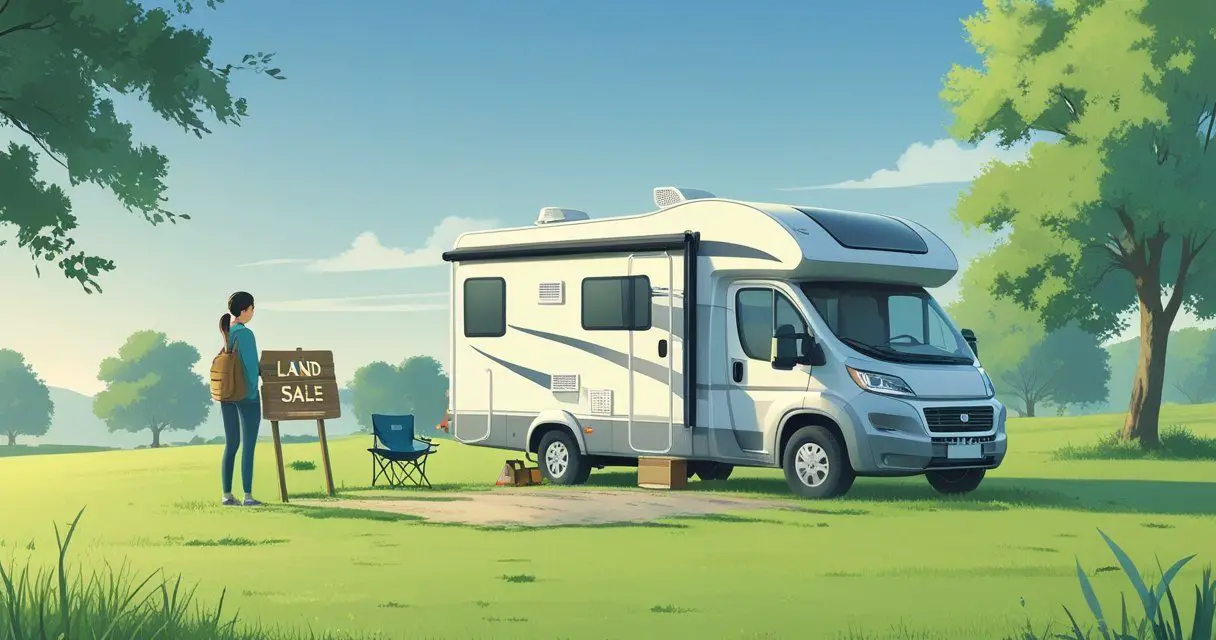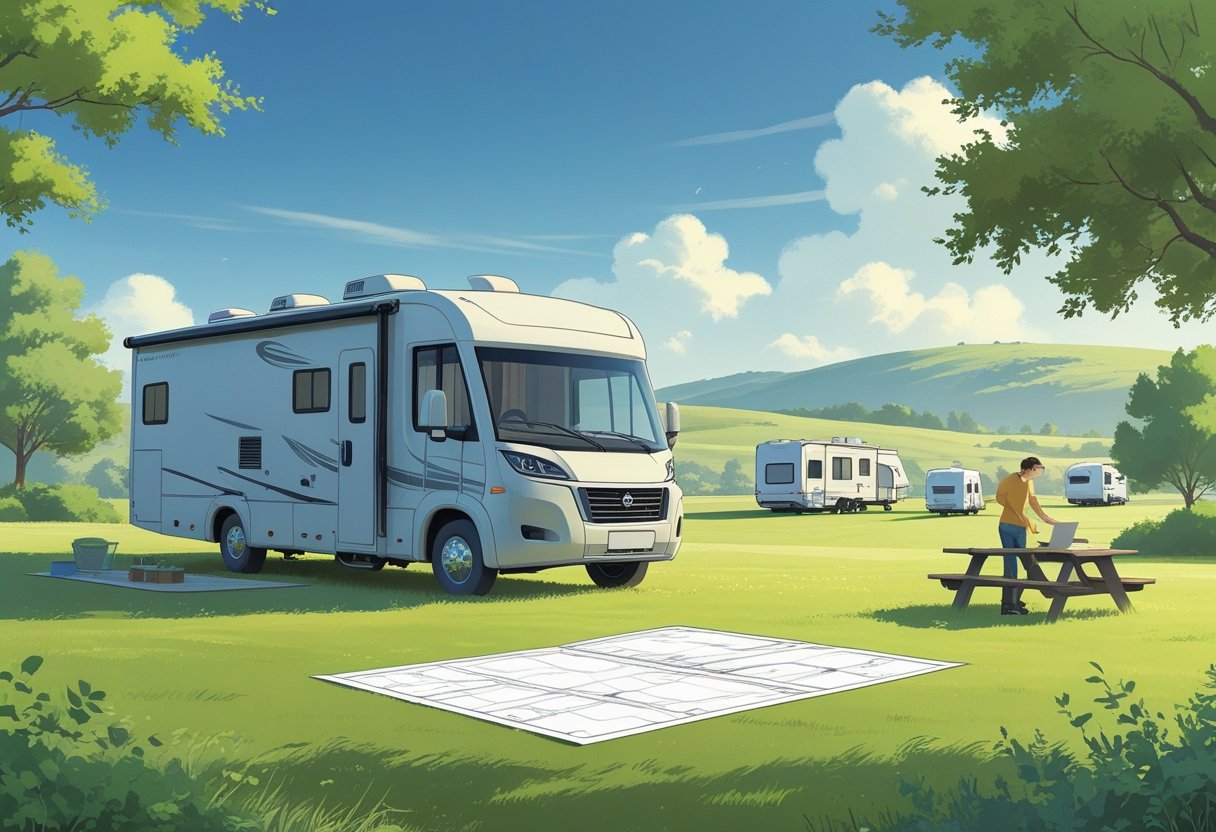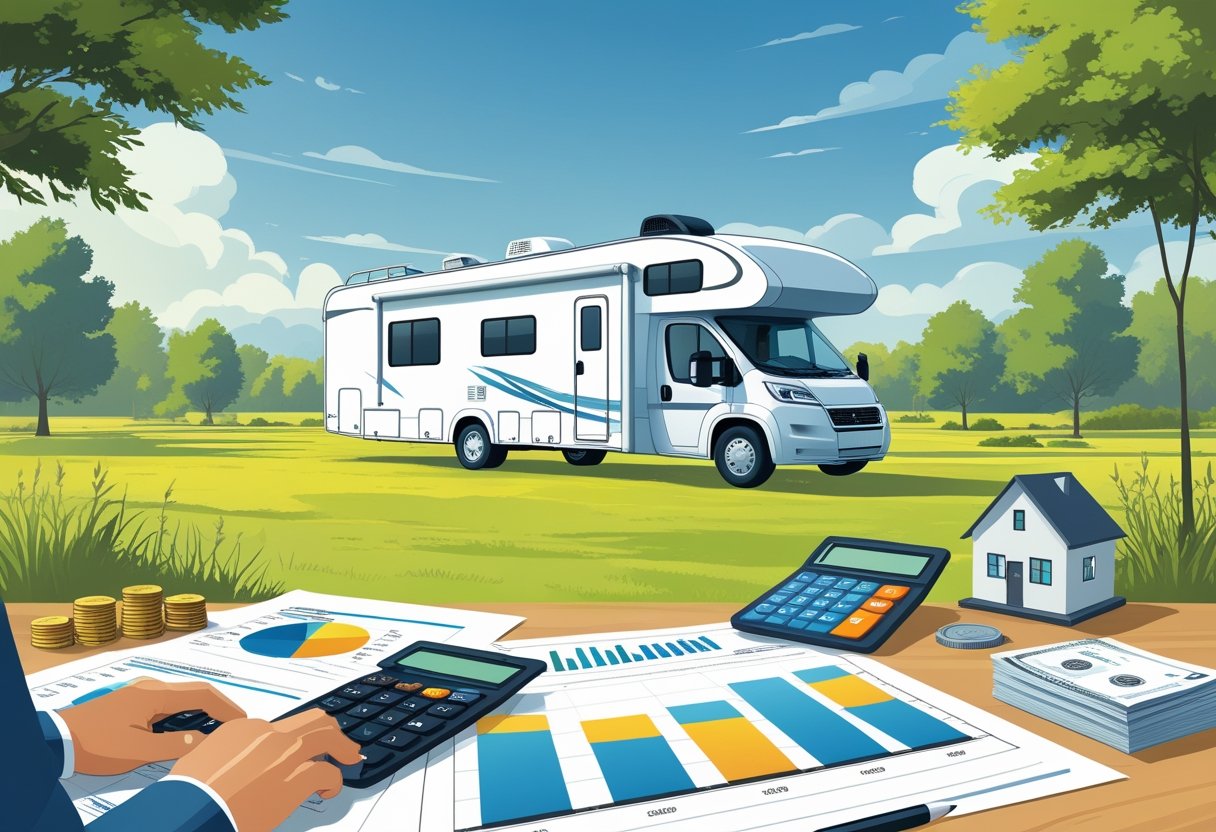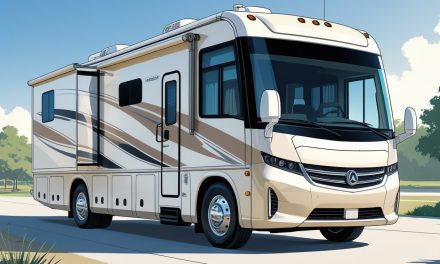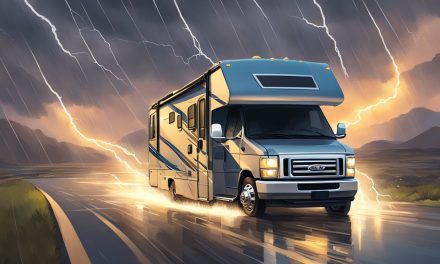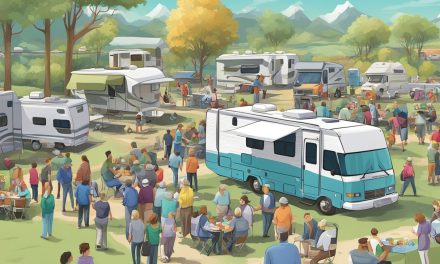Would you like to save this article?
The simple answer is yes, you can buy land to live in an RV, but the process involves more than just making a purchase. Owning land doesn’t automatically give you the right to live in an RV on that property due to local zoning laws, building codes, and permit requirements that vary by location. Many areas classify RVs as temporary structures rather than permanent homes, which creates legal hurdles you must navigate.
Your success depends heavily on understanding local regulations before you buy. Rural areas often have more relaxed rules compared to cities and suburban zones. You’ll need to research zoning ordinances, obtain proper permits for utilities, and ensure the property allows RV living as a primary residence. Some areas only permit RV living for limited periods or during home construction.
This guide will walk you through the legal requirements, location selection, utility setup, and financial considerations. You’ll also learn about alternatives like RV parks and land cooperatives that might better suit your needs and budget.
Key Takeaways
- Local zoning laws and permits determine whether you can legally live in an RV on your land, not just property ownership
- Rural locations typically offer more flexibility for RV living compared to urban areas with stricter building codes
- Utility installation, permits, and infrastructure setup can cost thousands of dollars beyond the initial land purchase
Legal Considerations for Living in an RV on Your Own Land
Most states allow full-time RV living on private land, but local zoning laws and permitting requirements create the real barriers. You’ll need to research specific regulations in your area before you buy land or commit to this lifestyle.
State and Local Zoning Laws
State laws generally don’t prohibit RV living, but local zoning creates most restrictions. Your property must be zoned correctly to allow RV residency as a primary dwelling.
Residential zones often require traditional homes with permanent foundations. Commercial or agricultural zones may have different rules. Some areas have specific RV or mobile home zones.
RV-Friendly States:
- Texas, Florida, Arizona
- South Dakota, Oregon
- Montana, Wyoming
Restrictive States:
- Delaware (strictly prohibited)
- Hawaii (sleeping in RVs generally banned)
- New York (extensive permits required)
Many eastern states have stricter regulations than western states. California allows RV living but has specific requirements about utilities and health standards.
You must check both county and city ordinances. Rules can vary dramatically between neighboring jurisdictions.
Permitting and Residency Restrictions
Most areas require permits for full-time RV residency on private property. These permits often come with specific conditions and time limits.
Common permit requirements include:
- Property size minimums (Maryland requires one acre)
- Utility connections (water, sewer, electric)
- Safety inspections of your RV
- Registration with local motor vehicle departments
Some states limit occupancy periods. Idaho restricts RV living to six months and prohibits it from November 30th to March 15th.
Nebraska requires permits for stays over 30 days. These permits aren’t transferable if you sell your RV.
Permit costs and approval times vary widely. Some areas make the process intentionally difficult to discourage RV living.
Land Use Regulations
Land use rules determine what activities you can do on your property. These regulations often override your property rights regarding RV living.
Your RV may need to meet building codes for permanent residences. This includes proper waste disposal systems and utility hookups.
Key Requirements:
- Septic systems or sewer connections
- Well water or municipal water access
- Electrical service to code
- Setback distances from property lines
Missouri requires RVs to be hidden from public roads and maintained in good condition. Nevada only allows full-time RV living outside city limits.
Some areas allow RV living only while you build a permanent home. Others require the property owner to live in the main residence.
You may face restrictions on the number of RVs per property or the type of RV allowed.
Choosing the Right Location to Buy Land for RV Living
The location you choose affects costs, local laws, and daily living conditions. Property taxes and zoning rules vary greatly between urban and rural areas and different climate zones.
Urban vs. Rural Property Options
Urban and suburban areas offer better access to services but cost more. You’ll find grocery stores, hospitals, and internet connections nearby. However, land prices run much higher in cities.
Property tax rates in urban areas typically range from 1-3% of the land’s value each year. This means a $50,000 lot could cost $500-$1,500 annually in taxes.
Rural properties cost much less upfront. States like Indiana and Oklahoma sell land for $20,000-$30,000 that includes 8,000 square feet or more. Rural property taxes stay lower too.
The trade-off comes with fewer services. You might need to drive 30+ minutes for groceries or medical care. Internet options may be limited to satellite connections.
Key factors to compare:
- Land purchase price
- Annual property tax costs
- Distance to essential services
- Internet availability
- Emergency services access
Climate and Regional Considerations
Weather patterns affect your comfort and RV maintenance costs. Hot climates increase air conditioning costs and can damage RV seals faster. Cold areas require winterization and may limit year-round living.
Seasonal temperature ranges matter for utility planning. Areas with mild winters like Arizona or Florida work well for RV living. Extreme cold regions may require expensive heating systems.
Some states offer better conditions for RV living. Texas, Florida, and Colorado have favorable laws and climate conditions. These states also tend to have lower property taxes on raw land.
Regional costs vary significantly:
- Utilities hookup fees
- Local permit requirements
- Building inspection costs
- Weather-related maintenance needs
Essential Utilities and Infrastructure for RV Living
Setting up a full-time RV on your land requires three critical utility systems and proper access. These basic infrastructure needs determine whether your RV living setup will be comfortable and legally compliant.
Water, Sewer, and Electric Hookups
Water supply for your RV comes from two main sources. You can drill a new well on your property, which requires local permits and health department approval. Well drilling costs range from $3,000 to $15,000 depending on depth and location.
Municipal water connection is the second option if available in your area. This requires a licensed plumber to install proper hookups and usually costs $1,000 to $3,000.
Electrical service needs professional installation by a licensed electrician. You’ll need an RV electrical pedestal that provides 30-amp or 50-amp service. The electrician must pull permits and pass inspection. Costs typically run $500 to $2,500 for basic hookups.
Off-grid power using solar panels is another choice. A full solar setup for an RV costs $3,000 to $10,000 but eliminates monthly electric bills.
Sewer systems require the most planning. Installing a septic system involves soil testing, permits, and professional installation. Septic systems cost $3,000 to $7,000 for RV use.
Connection to municipal sewer lines is cheaper at $1,500 to $4,000 but isn’t available in rural areas. All wastewater systems need health department permits and inspections.
Internet and Connectivity Needs
Reliable internet is essential for full-time RV living, especially if you work remotely. Rural properties often have limited internet options, so research providers before buying land.
Fixed wireless internet from local providers offers speeds up to 100 Mbps in many rural areas. Monthly costs range from $50 to $150. You may need to install a tower or antenna on your property.
Satellite internet works anywhere but has data limits and higher costs. Starlink provides unlimited high-speed internet for $120 per month plus $600 for equipment.
Cellular internet through hotspot devices works if you have good cell tower coverage. Unlimited plans cost $50 to $100 monthly but may slow down after heavy use.
Test internet speeds at your land before committing to full-time RV living. Many remote workers need at least 25 Mbps download speeds for video calls and file transfers.
Road Access and Safety
Your RV needs safe, legal access from public roads to your property. Check if existing roads can handle large RV traffic and emergency vehicles.
Private roads may need improvements for RV access. Grading, gravel, and drainage improvements cost $2 to $5 per square foot. Roads should be at least 12 feet wide for safe RV passage.
Emergency access is required by most counties. Fire trucks and ambulances must reach your RV within certain distance limits. Some areas require turnaround spaces for emergency vehicles.
Consider seasonal access challenges like snow, mud, or flooding. Install proper drainage and use appropriate road materials for your climate. Bridge weight limits may restrict RV access on some private roads.
RV Parks vs. Private Land Ownership
When you want to live in an RV, you have two main housing options: staying at traditional RV parks or buying your own designated lot. Each choice offers different levels of control, costs, and long-term benefits.
Traditional RV Parks
Traditional RV parks offer temporary stays with established amenities and services. You pay daily, weekly, or monthly fees to rent a space.
Key Features:
- Full hookups for water, electricity, and sewer
- Shared facilities like bathrooms, laundry, and recreation areas
- No long-term financial commitment
- Professional maintenance and management
Popular RV parks fill up quickly during busy travel seasons. You must make reservations in advance and may face availability issues.
Cost Structure:
- Daily rates: $30-80
- Monthly rates: $400-1,500
- Seasonal rates: Often discounted
The main downside is lack of control. Park rules dictate quiet hours, pet policies, and guest restrictions. You cannot modify your space or make permanent improvements.
Some parks offer annual contracts with reduced rates. These agreements provide more stability but still limit your ownership rights.
Deeded RV Lots and HOAs
Deeded RV lots give you actual ownership of a specific piece of land within an RV community. You receive a deed proving legal ownership of your lot.
Ownership Benefits:
- Permanent space that cannot be taken away
- Ability to rent your lot to others
- Potential property value appreciation
- No reservation hassles
Most deeded lots exist within RV resorts or subdivisions with homeowners associations (HOAs). These communities often feature gated access and resort-style amenities.
HOA Considerations:
- Monthly fees: $100-500
- Rules about RV age and appearance
- Restrictions on rentals and modifications
- Voting rights in community decisions
Purchase prices vary widely based on location and amenities. Lots near popular destinations cost $50,000-200,000 or more.
You must follow HOA rules even though you own the land. These restrictions can limit your freedom similar to traditional RV parks but with higher upfront costs.
Financial Aspects of Owning Land for RV Living
Buying land for RV living involves significant upfront costs and ongoing expenses that require careful planning. Property taxes become a permanent financial responsibility, while financing options may be limited compared to traditional home purchases.
Property Taxes and Ongoing Expenses
Property taxes represent your largest ongoing expense when you buy land for RV living. These taxes are based on your land’s assessed value and local tax rates.
Rural areas typically have lower property tax rates than urban locations. However, tax rates can vary widely between counties and states.
Annual expenses you’ll face include:
- Property taxes (typically 0.5% to 2% of land value)
- Insurance for your RV and liability coverage
- Utility connections and monthly service fees
- Septic system maintenance ($200-500 annually)
- Well water testing and pump maintenance
- Road maintenance for private access roads
Utility hookups create substantial upfront costs. Basic electrical, water, and sewer connections range from $3,000 to $15,000 depending on distance from existing lines.
Installing a well and septic system can cost $10,000 to $30,000 combined. These systems require regular maintenance and eventual replacement.
Financing Land Purchases
Financing raw land differs significantly from home mortgages. Banks view undeveloped land as higher risk, resulting in stricter lending requirements.
Most lenders require 20% to 50% down payments for land purchases. Interest rates are typically 1-3% higher than traditional mortgages.
Common financing options include:
- Land loans from banks (typically 5-20 year terms)
- Owner financing directly from the seller
- Personal loans for smaller parcels
- Cash purchases (most common for RV land)
Your credit score needs to be higher for land loans, usually 700 or above. Lenders also require proof of income and detailed plans for land use.
Owner financing offers more flexibility but requires careful contract review. You’ll negotiate terms directly with the seller, often with lower down payments.

